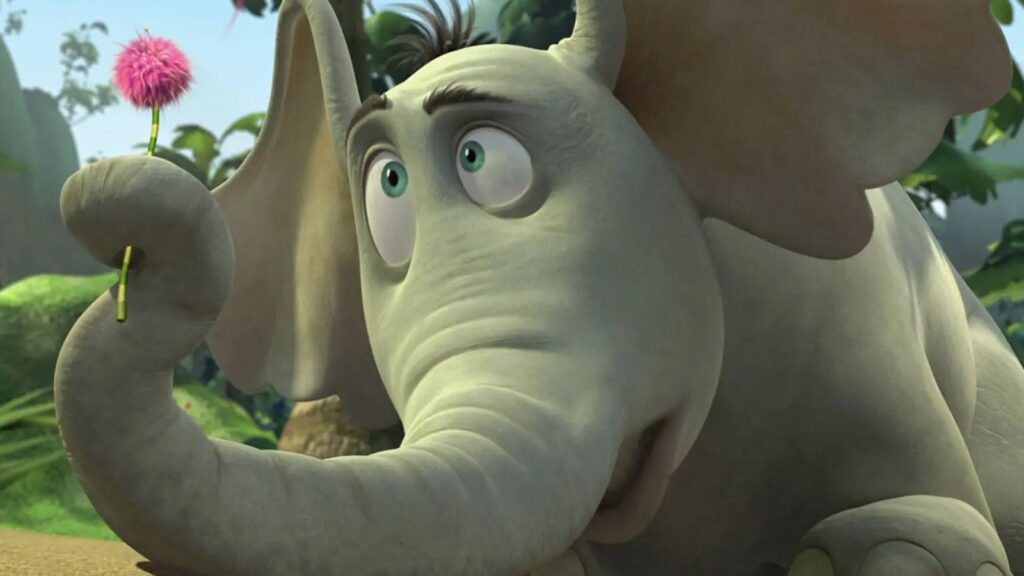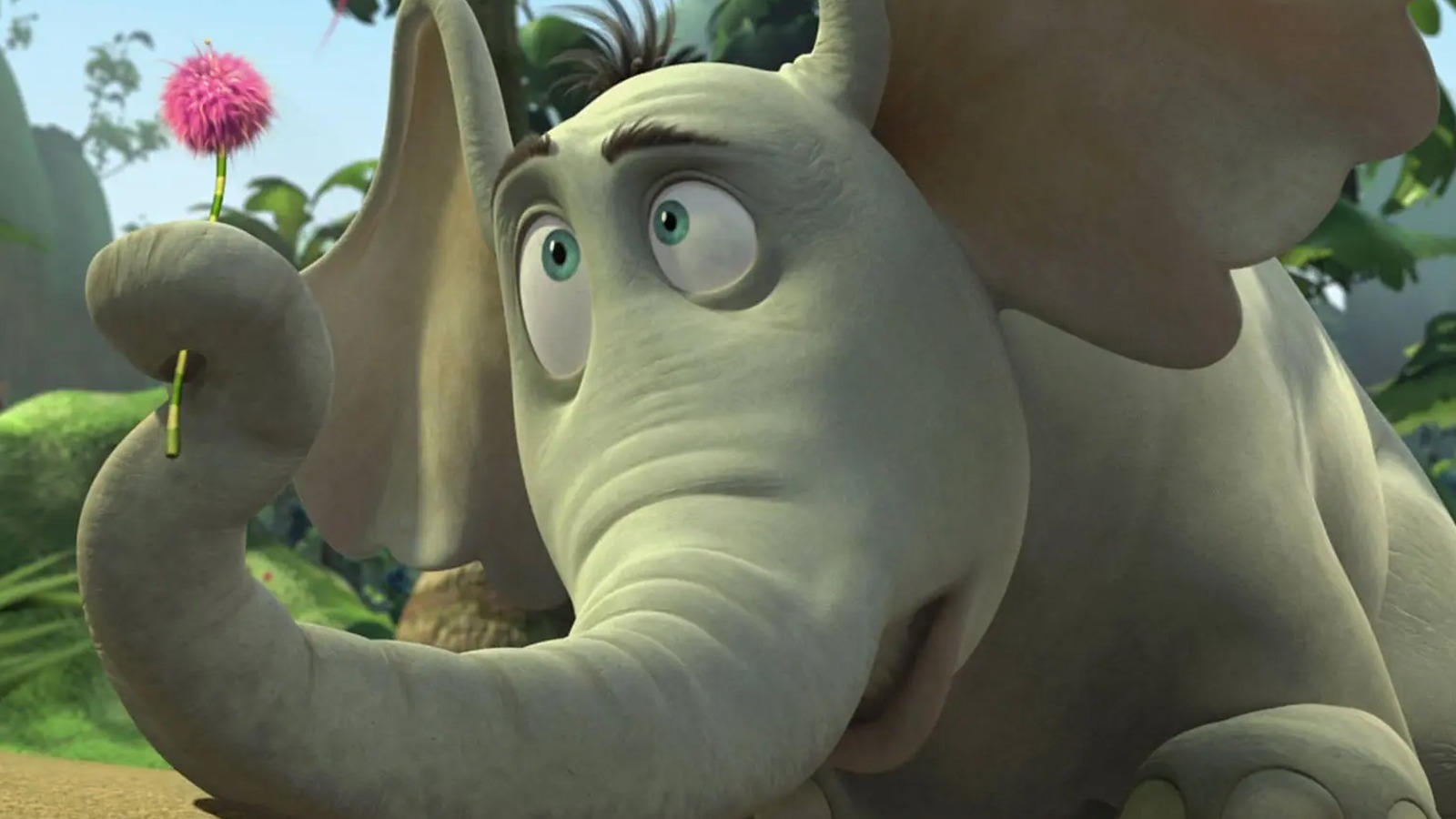
Horton Hears a Who: A Timeless Tale of Empathy and Inclusion
Dr. Seuss’s “Horton Hears a Who” is more than just a children’s book; it’s a profound exploration of empathy, inclusion, and the power of individual action. Published in 1954, this story of an elephant who discovers a tiny world on a speck of dust continues to resonate with readers of all ages. The enduring appeal of “Horton Hears a Who” lies in its simple yet powerful message: “A person’s a person, no matter how small.” This article will delve into the plot, themes, historical context, and lasting impact of this beloved classic.
Plot Summary: A Journey of Faith and Perseverance
The story begins with Horton, a kind-hearted elephant, bathing in a pool. He hears a faint cry for help emanating from a speck of dust floating by. Intrigued, Horton picks up the speck and discovers that it is home to Whoville, a microscopic city inhabited by tiny creatures called Whos. The Mayor of Whoville pleads with Horton to protect them, as their world is in danger of being destroyed.
Horton, despite not being able to see the Whos, believes in their existence and vows to protect them. He faces ridicule and disbelief from his fellow jungle animals, who cannot hear or see Whoville. Kangaroo, the leader of the jungle, is particularly skeptical and deems Horton delusional. She rallies the other animals to capture Horton and destroy the speck of dust.
Throughout the story, Horton remains steadfast in his commitment to the Whos. He carries the speck of dust to safety, enduring hardship and facing constant opposition. He tries to convince the other animals of the Whos’ existence, but they remain unconvinced. Finally, with the help of the Mayor, the Whos make enough noise to be heard. One small Who, JoJo, finally adds his voice to the cacophony, breaking the sound barrier and proving their existence to the disbelieving animals. Kangaroo, humbled, finally understands and accepts the Whos, and Horton is vindicated.
Themes: Empathy, Inclusion, and Individual Responsibility
“Horton Hears a Who” explores several important themes, most notably empathy and inclusion. Horton’s ability to hear and believe in the Whos, despite their size and invisibility, demonstrates a profound sense of empathy. He puts himself in their place and understands their vulnerability, motivating him to protect them. The story encourages readers to develop empathy for those who are different or marginalized.
The theme of inclusion is central to the story’s message. The Whos are a tiny and insignificant community, but Horton recognizes their inherent worth and right to exist. The story challenges readers to question their own prejudices and biases and to embrace diversity. It promotes the idea that every individual, regardless of size, background, or beliefs, deserves respect and inclusion.
“Horton Hears a Who” also emphasizes the importance of individual responsibility. Horton’s actions demonstrate that one person can make a difference, even in the face of overwhelming opposition. He stands up for what he believes in, even when it’s unpopular or difficult. The story inspires readers to take responsibility for their actions and to speak out against injustice.
Historical Context: Allegory for Post-War Japan
While Dr. Seuss never explicitly stated it, many scholars believe that “Horton Hears a Who” is an allegory for the American occupation of Japan after World War II. Seuss was a staunch supporter of the occupation and saw it as an opportunity to rebuild Japan as a democratic and peaceful nation. Horton’s protection of the Whos can be interpreted as a metaphor for the United States’ efforts to protect and support the Japanese people.
The book also addresses themes of isolationism and the importance of international cooperation. Kangaroo and the other animals represent those who are unwilling to accept or understand other cultures or perspectives. Horton, on the other hand, embodies a more open and inclusive approach to the world. The story encourages readers to embrace diversity and to work together to solve global problems.
Adaptations and Cultural Impact: Beyond the Page
“Horton Hears a Who” has been adapted into several different media, including a 1970 animated television special, a 2008 animated feature film, and a stage musical. These adaptations have helped to introduce the story to new generations of readers and viewers. The film adaptation, in particular, was a critical and commercial success, further solidifying the book’s place in popular culture.
The phrase “A person’s a person, no matter how small” has become a widely recognized and quoted slogan, often used to advocate for the rights of marginalized groups. The book’s message of empathy and inclusion continues to resonate with readers and has inspired countless acts of kindness and compassion. “Horton Hears a Who” remains a powerful and relevant story, even decades after its initial publication. The story of Horton Hears a Who is a reminder that even the smallest voice deserves to be heard.
Critical Reception and Analysis
“Horton Hears a Who” has received widespread critical acclaim for its heartwarming story, memorable characters, and powerful message. Critics have praised Seuss’s ability to convey complex themes in a simple and accessible way. The book has been lauded for its ability to promote empathy, inclusion, and individual responsibility in young readers.
Some critics have also noted the book’s potential for political interpretation, particularly in relation to the Cold War era. The story’s themes of isolationism and international cooperation can be seen as a reflection of the political tensions of the time. However, the book’s universal message of empathy and inclusion transcends any specific political context.
The Enduring Legacy of Horton
“Horton Hears a Who” is more than just a children’s book; it’s a timeless classic that continues to inspire and uplift readers of all ages. Its message of empathy, inclusion, and individual responsibility is as relevant today as it was when the book was first published. The story of Horton’s unwavering commitment to the Whos is a powerful reminder that every individual, no matter how small or insignificant they may seem, deserves to be heard and respected. [See also: Dr. Seuss Biography] The book continues to be a staple in classrooms and homes around the world, teaching children valuable lessons about compassion and understanding.
The impact of Horton Hears a Who extends beyond the literary world. It has influenced social movements, inspired acts of kindness, and served as a reminder that even the smallest voice can make a difference. The enduring legacy of Horton Hears a Who is a testament to the power of storytelling to shape our world for the better.
In conclusion, “Horton Hears a Who” is a masterpiece of children’s literature that deserves its place among the most beloved and influential books of all time. Its timeless message of empathy, inclusion, and individual responsibility will continue to resonate with readers for generations to come. The tale serves as a powerful reminder that every person counts, and that even the smallest voice can make a world of difference. So, next time you encounter someone who feels unheard or unseen, remember Horton and his unwavering belief in the Whos. Remember that a person’s a person, no matter how small.
Horton’s Impact on Pop Culture
The impact of Horton Hears a Who extends far beyond the realm of children’s literature. The phrase “A person’s a person, no matter how small” has become a rallying cry for various social justice movements, advocating for the rights of marginalized groups and underscoring the importance of inclusivity. The story’s themes have been adopted in educational programs, promoting empathy and understanding among young people. The continued relevance of Horton Hears a Who speaks to its profound and lasting message. [See also: The Lorax: Environmentalism in Children’s Literature]
The Art of Dr. Seuss: A Visual Masterpiece
Beyond the story itself, the illustrations in Horton Hears a Who contribute significantly to the book’s appeal. Dr. Seuss’s distinctive artistic style, characterized by whimsical characters and fantastical landscapes, brings the story to life in a visually captivating way. The illustrations enhance the story’s themes, emphasizing the contrast between the large, imposing Horton and the tiny, vulnerable Whos. The visual elements of Horton Hears a Who are as integral to its success as the narrative itself.
Why ‘Horton Hears a Who’ Still Matters Today
In an increasingly divided world, the message of Horton Hears a Who is more relevant than ever. The story reminds us of the importance of empathy, understanding, and standing up for those who are vulnerable. It challenges us to question our prejudices and biases and to embrace diversity. The enduring appeal of Horton Hears a Who lies in its ability to inspire hope and promote positive change. As long as there are voices that need to be heard, the story of Horton Hears a Who will continue to resonate with readers of all ages.

